
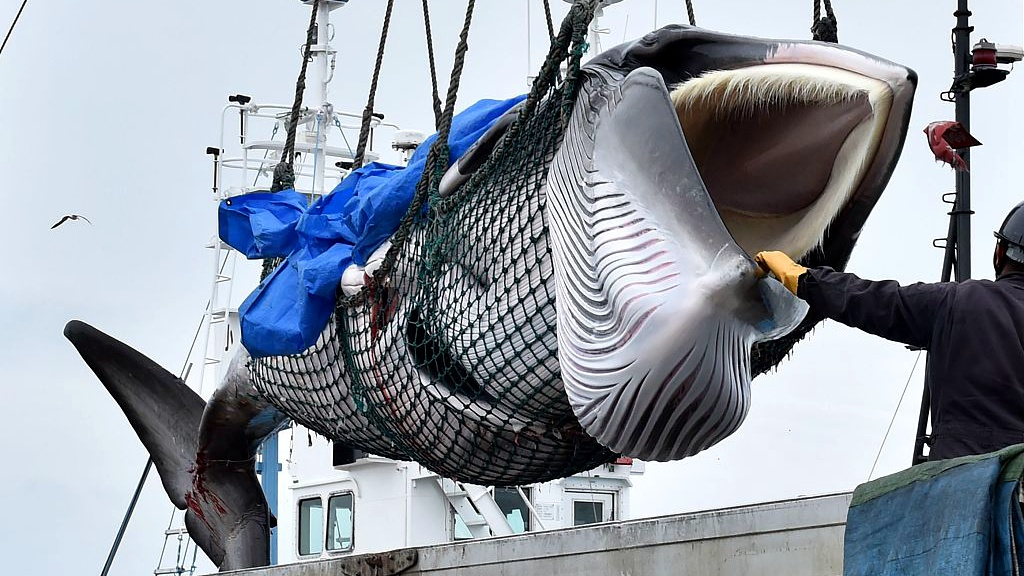
A fleet of whaling ships set off Monday from ports in Shimonoseki in western Japan and Kushiro in the north, marking the resumption of commercial whaling in Japan in over 30 years. Here are some questions you might want to ask.
1. Where can Japan whale after the resumption?
After Japan announced its withdrawal from the International Whaling Commission (IWC) last December, Japan would cease its annual scientific whaling in the North Pacific and Antarctica starting this July.
The resumption of commercial whaling would be limited to Japan's territorial waters and its exclusive economic zone.
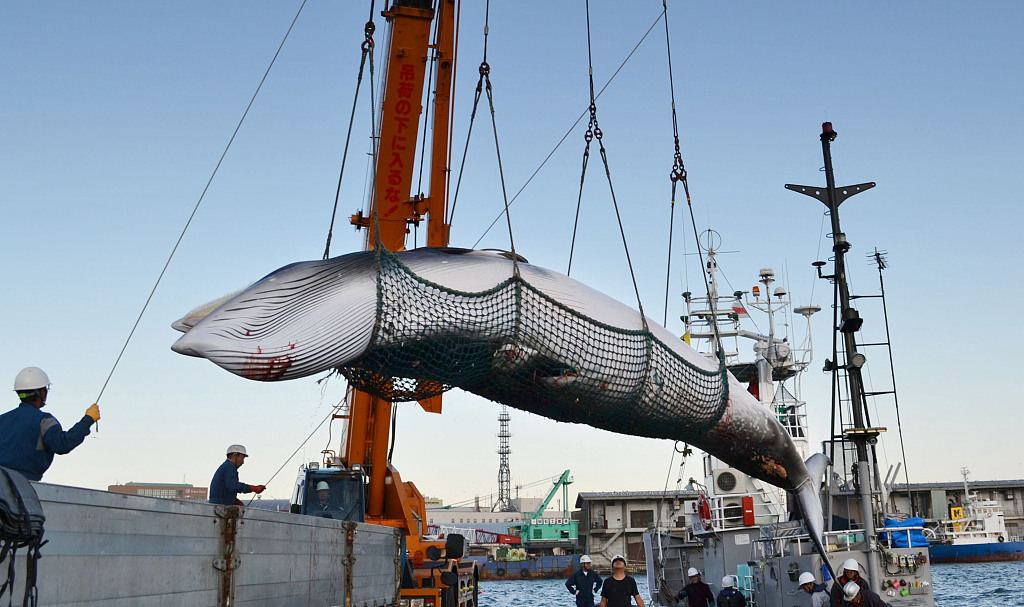
A minke whale is landed at a port in Kushiro on Japan's northernmost main island of Hokkaido on Sept. 4, 2017. /VCG Photo
2. How many whales will Japan hunt after the resumption?
The whaling quota of Japan this year has not yet been announced. Though Japan has withdrawn from IWC, its whaling quota will be calculated each year in line with a standard set by the IWC to conserve whales.
The country will allow for the hunting of three types of whales that are considered to be sufficient in stock, namely minke, Bryde's and sei whales. According to the IUCN Red List, minke and Bryde's are classified as "Least Concern." Although sei whale is listed as "Endangered," its population has increased over the years.
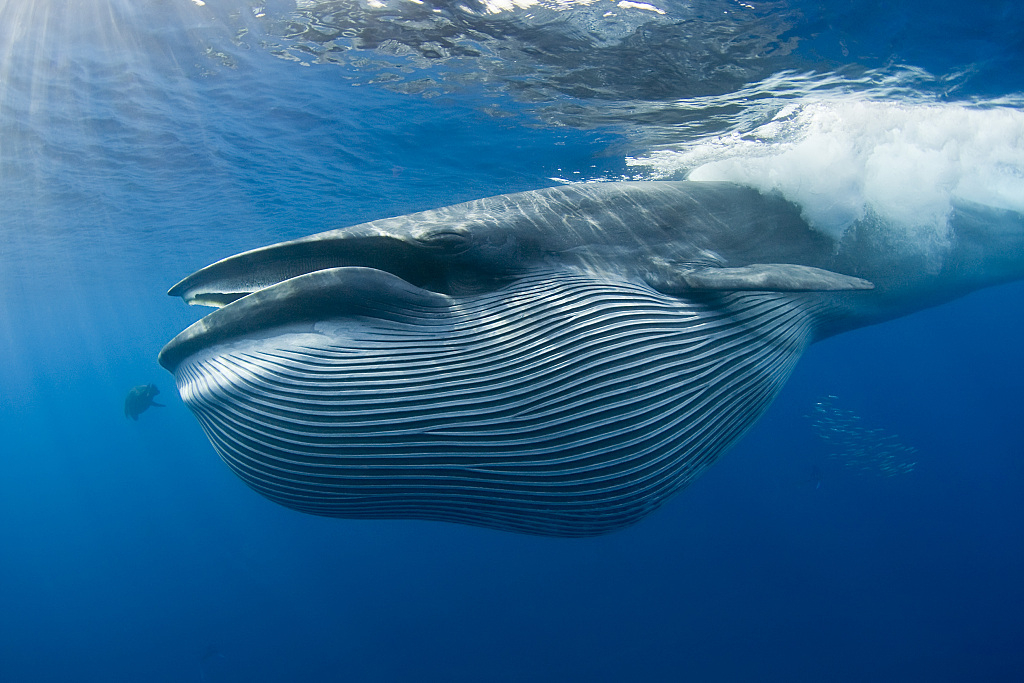
Bryde's whale. /VCG Photo
3. How does commercial whaling differ from scientific whaling?
There are three types of whaling recognized by IWC, which are aboriginal subsistence whaling, scientific whaling (special permit whaling) and commercial whaling.
For scientific whaling, countries have to submit research proposals to the IWC for scientific review. They are permitted to kill whales for scientific research purposes, such as the lethal sampling methods to study the age of a whale.
Japan switched to scientific whaling and stopped commercial whaling in 1988 after the IWC imposed a moratorium on commercial whaling.
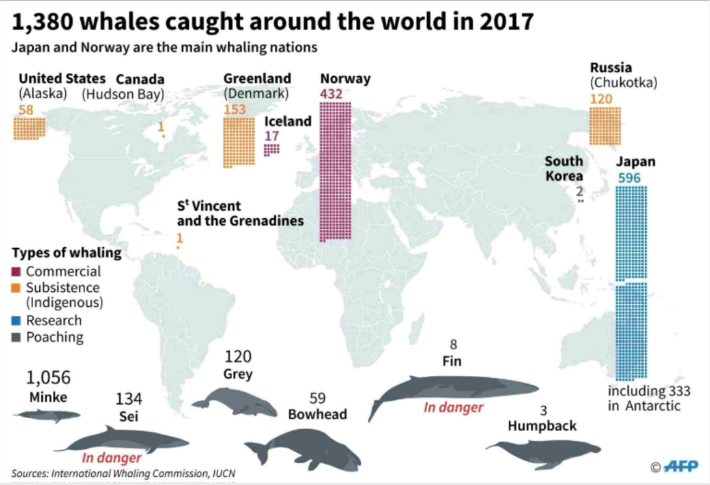
Infographic about whales caught around the world in 2017. /AFP Infographic
Since the byproducts of scientific whaling, such as whale meat and whale blubber, are allowed to be sold according to the International Convention for the Regulation of Whaling (ICRW), Japan has long been criticized for selling the meat of dead whales to restaurants.
In 2014, Japan was temporarily banned from whaling in the Antarctic because International Court of Justice ruled its “scientific project” as commercial practices. Since then, Japan has reduced its annual quota in the Antarctic by about one third.
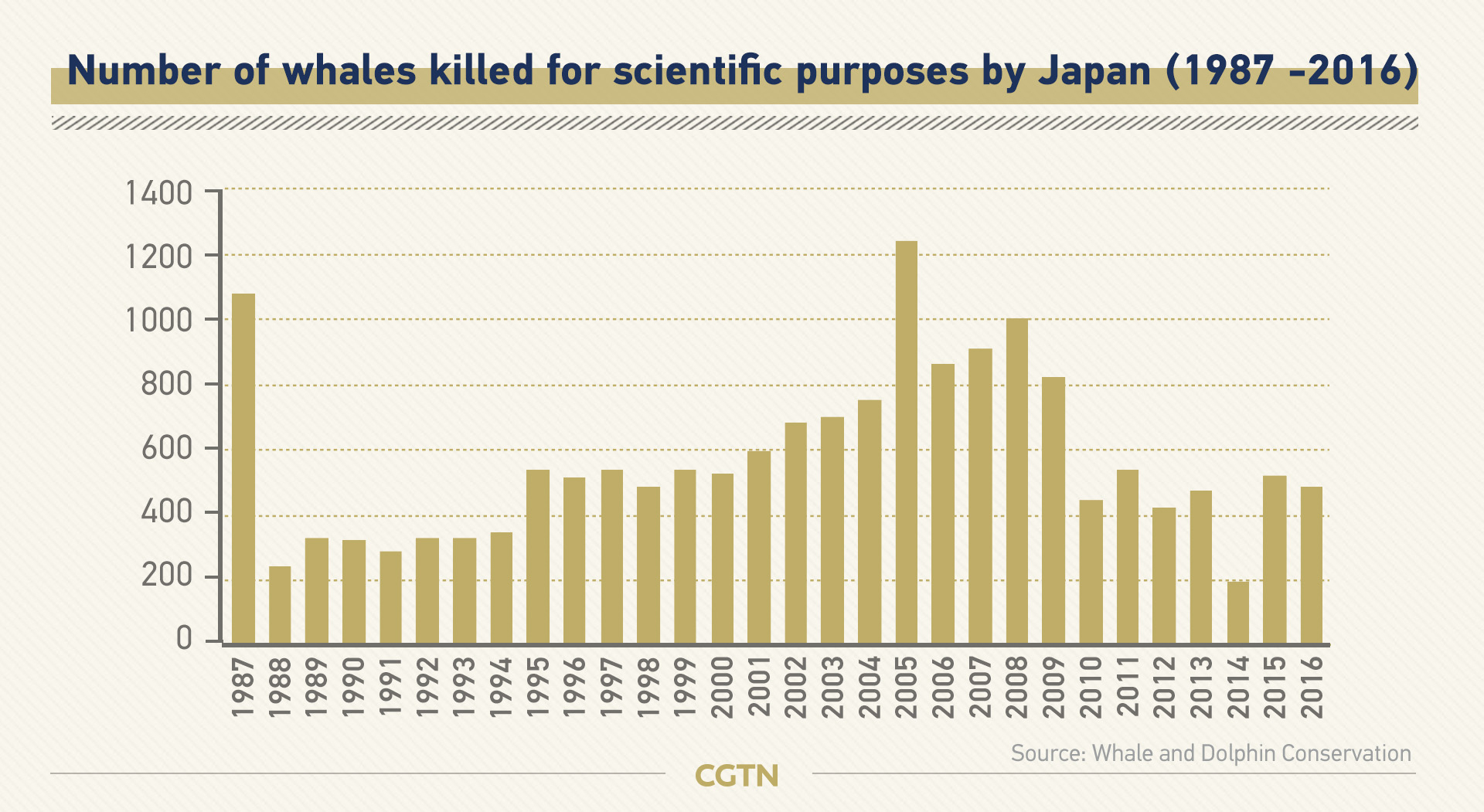
Number of whales killed for scientific purposes by Japan. /CGTN Graphic
4.Does Japanese still love whale meat that much?
Surprisingly, whale meat is no longer a major protein source in Japan nowadays. Back in the 1960s, whale meat was favored by locals. Over 200,000 tons of whale meat was consumed in Japan every year at that time.
However, there was a steady decline of whale consumption in Japan from the 1970s onward as the production of pork and poultry increased. In 2016, whale meat accounted for only about 0.1 percent of Japan's total meat consumption.
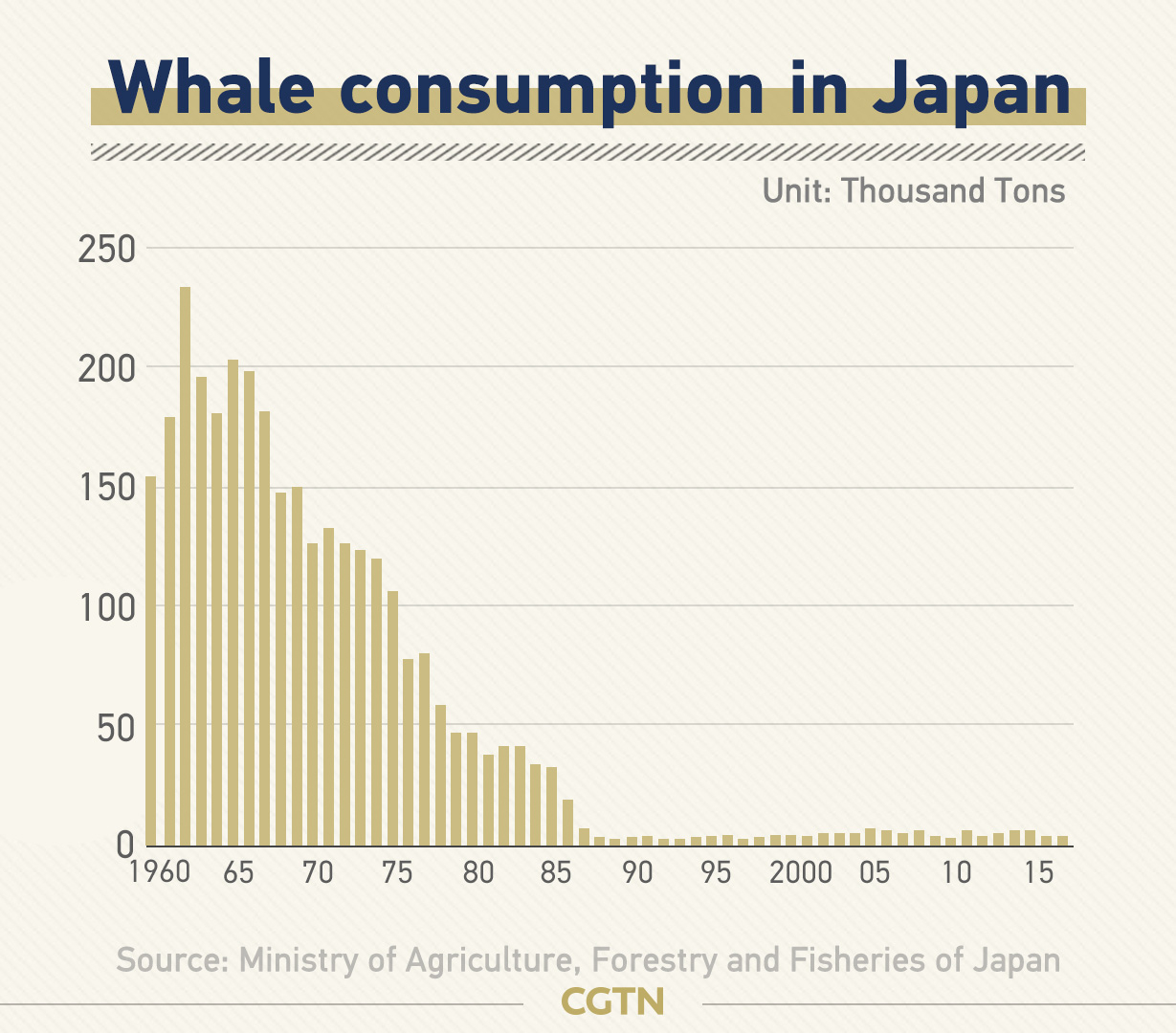
Whale consumption in Japan. /CGTN Graphic
5. Why has Japan resumed commercial whaling?
Japan decided to withdraw from the IWC last year because it thought that the IWC focused too much on whale conservation and abandoned its original purpose of managing whale stocks and developing the industry.
Despite the sluggish domestic demand for whale meat, Japan has resumed commercial whaling out of multiple considerations.
Firstly, whaling is a Japanese tradition. The cheap and abundant whale meat has become a symbol of the home and childhood for the older generations. International criticism of whaling is sometimes regarded as an imposition of Western values.
Secondly, the cost of traveling to the Antarctic to conduct scientific whaling is high. The maintenance fees for the large vessel that can travel long distances are also high. In comparison, hunting whales commercially in its territorial waters and exclusive economic zones is much cheaper.
Thirdly, some old whaling towns such as Taiji are in the electoral district of the ruling Liberal Democratic Party, which has long pushed for the resumption of commercial whaling. Though the whaling industry is not a lucrative business anymore, it affects people's lives.
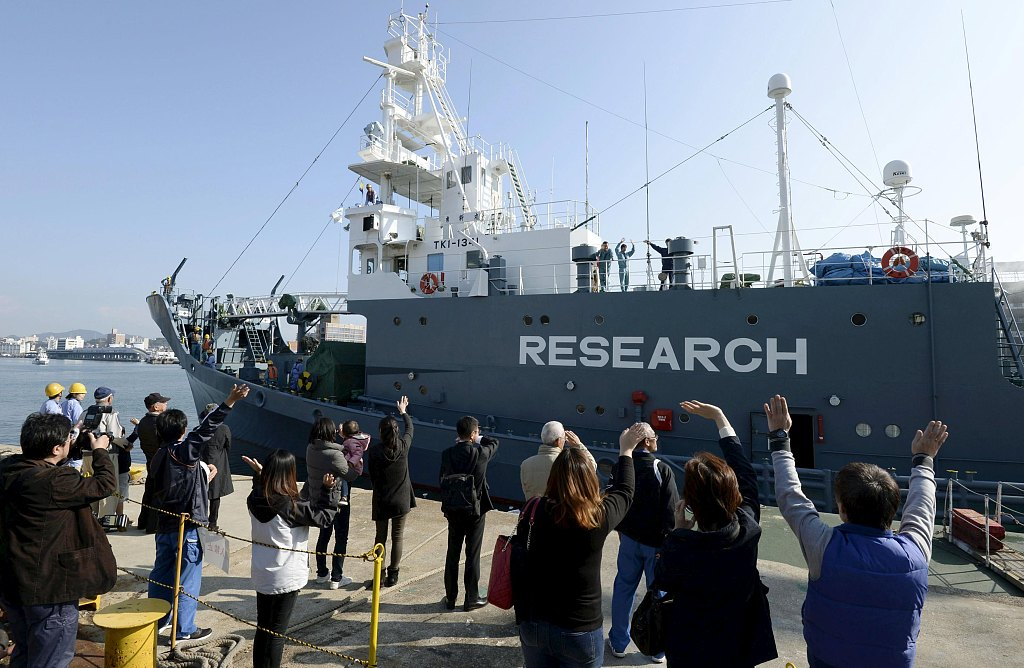
Families of crew members wave as Japanese whaling vessel Yushin Maru leaves for the Antarctic Ocean at a port in Shimonoseki, southwestern Japan, on December 1, 2015. /VCG Photo
Read More:
Japan resumes commercial whaling after three-decade ban
After 30 years, why can't Japan give up on commercial whaling?
(Cover image via VCG. Video edited by CGTN's Chen Haomin. Graphic designed by CGTN's Yin Yating and Jia Jieqiong.)
(If you want to contribute and have specific expertise, please contact us at nature@cgtn.com.)

Copyright © 2018 CGTN. Beijing ICP prepared NO.16065310-3
Copyright © 2018 CGTN. Beijing ICP prepared NO.16065310-3